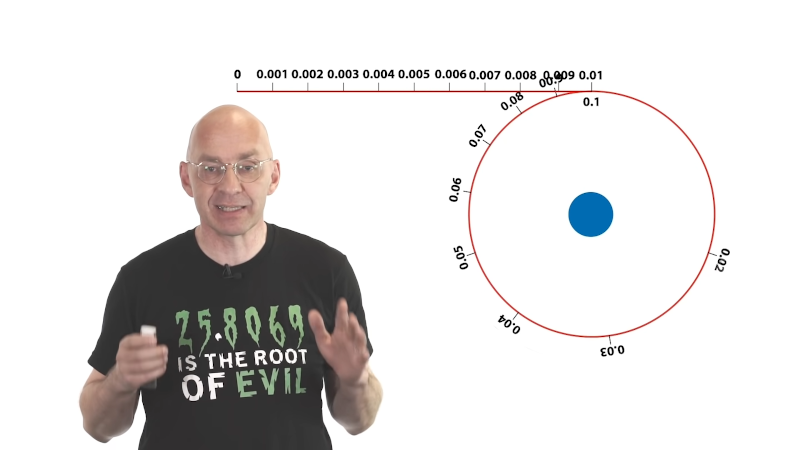
Around here we mostly enjoy slide rules. We even have our own collections including some cylindrical and circular ones. But [Mathologer] discusses a recent Reddit post that explains a circular slide rule-like device using a wheel and a stretchable rubber band. While it probably would be difficult to build the actual device using a rubber band, it can do wonders for your understanding of logarithms which still show up in our lives when, for example, you are calculating decibels. [Dimitri] did simulate the rubber band for you in software.
The idea is that a perfect rubber band has numbers from 0 to 10 evenly marked on it. As you rotate a wheel attached at the 10 mark, the rubber band stretches more and more. So the 10 and the 9 have relatively little space between them, but the 1 and the 2 are much further apart. The wheel’s circumference is set so that the 1 will exactly overlay the 10. What this means is that each spot on the wheel can represent any number that differs only by a decimal point. So you could have 3 mean 0.03, 300, or — of course — 3. Of course, you don’t need to build the wheel with a rubber band — you could just mark the wheel like a regular circular slide rule.
If you’ve never really learned why a slide rule works or you don’t know how to work one, you’ll find the explanation in the video very intuitive and enlightening. You do have to have a rough idea of the order of magnitude of the answer you expect, but that’s not so hard with practice.
Of course, if you flatten the circle out, you get a regular slide rule. You can see some of my collection — but oddly, none of my circular ones — in an old post from 2015. If you want to make your own, we suggest you leave the rubber band in the drawer and check out [Dylan’s] work.
0 Commentaires